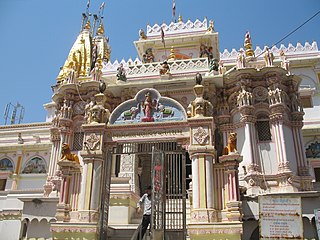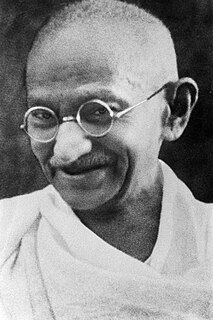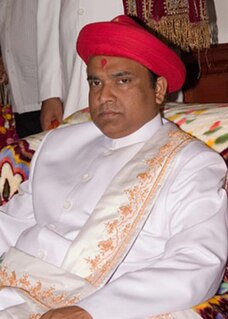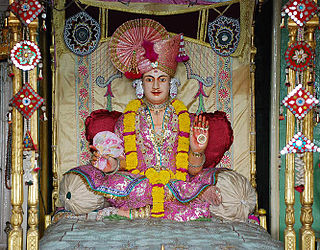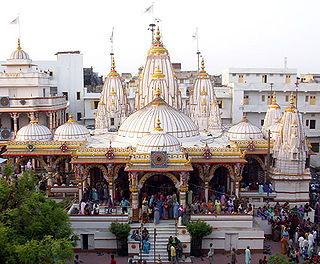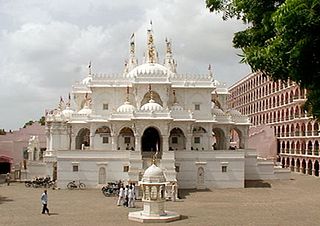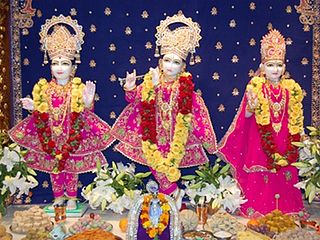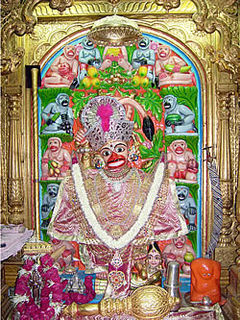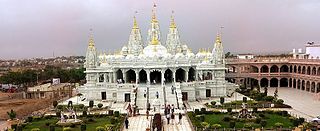| Shri Swaminarayan Mandir, Vadtal | |
|---|---|
 The headquarters of the Shri Laxminarayan Dev Gaadi | |
| Geography | |
| Country | India |
| State | Gujarat |
| District | kheda |
| Location | Vadtal |
| Culture | |
| Sanctum | Laxminarayan Dev, Shri Ranchodraiji, Harikrishna Maharaj, Radhakrishna Dev, Shri Dharmadev, Bhaktimata and Vasudevji |
| Major festivals | samaiyaa(twice in a year) |
| History | |
| Date built | 3 November 1824 |
| Creator | Sahajanand Swami |
| Website | vadtalmandir.org |
Shri Swaminarayan Mandir, Vadtal (Devnagari: श्री स्वामिनारायण मन्दिर, वडताल) headquarters of the Shri LaxmiNarayan Dev Gadi are located in this temple in Vadtal. [1] [2] There are three main shrines in the temple the central shirne of this temple is that of Lakshmi Narayan and RanchodRaiji. On the right there is an image of Radha Krishna with Swaminarayan in the form of Hari Krishna and the left has Vasudev, Dharma and Bhakti. [3] The wooden pillars of the temple bear colourful wood carvings. There is a dharamsala within the temple premises. Gnyanbaug is a garden to the northwest of the temple gate that has four memorials dedicated to Swaminarayan. [4] vadtal swaminarayan temple now declared as a pilgrim center by government of Gujarat and to be part of shrines recognized by Gujarat's Pavitra Yatradham Vikas Board, announced by Gujarat's Chief Minister Vijay Rupaniji.
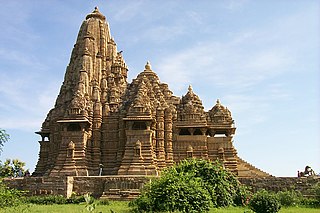
A Hindu temple is a symbolic house, seat and body of god. It is a structure designed to bring human beings and gods together, using symbolism to express the ideas and beliefs of Hinduism. The symbolism and structure of a Hindu temple are rooted in Vedic traditions, deploying circles and squares. It also represents recursion and equivalence of the macrocosm and the microcosm by astronomical numbers, and by "specific alignments related to the geography of the place and the presumed linkages of the deity and the patron". A temple incorporates all elements of Hindu cosmos—presenting the good, the evil and the human, as well as the elements of Hindu sense of cyclic time and the essence of life—symbolically presenting dharma, kama, artha, moksa, and karma.
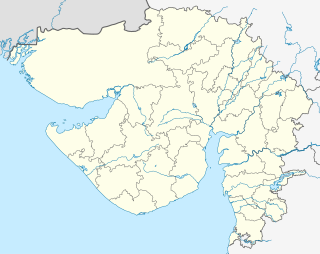
Vadtal is in the Kheda district of Gujarat, India. It is the pilgrim centre of Swaminarayan Sampraday and the location of Swaminarayan's temple. Gomati is a holy lake in Vadtal.
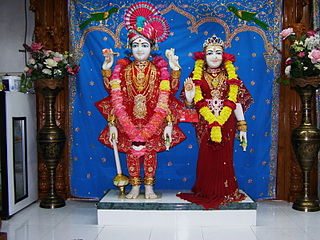
Lakshmi Narayan or Lakshmi-Narayana, also sometimes spelled Lakshminarayan, Lakshminarayana, Laxminarayana, is a manifestation of Vishnu in the Hindu religion. It is usually referring to Vishnu, also known as Narayan, when he is with his consort, Lakshmi, in his abode, Vaikuntha. The goddess of beauty Lakshmi is depicted as standing next to a dark-skinned Vishnu, who is holding a conch, mace, lotus and the Sudarshana Chakra. Another depiction of Lakshminarayan portrays Lakshmi in the service of Narayan, who is reclining on the cosmic serpent Sesha, floating in Kshīrsagār, the Ocean of Milk.





